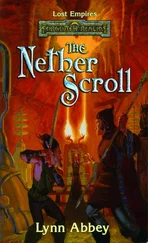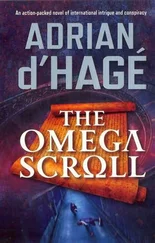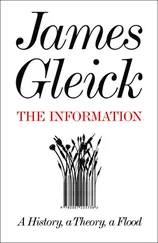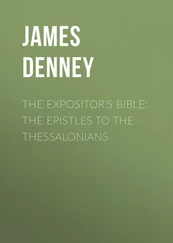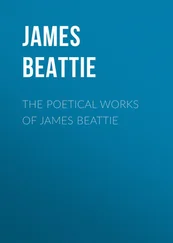James Becker - The Nosferatu Scroll
Здесь есть возможность читать онлайн «James Becker - The Nosferatu Scroll» весь текст электронной книги совершенно бесплатно (целиком полную версию без сокращений). В некоторых случаях можно слушать аудио, скачать через торрент в формате fb2 и присутствует краткое содержание. Жанр: Триллер, на английском языке. Описание произведения, (предисловие) а так же отзывы посетителей доступны на портале библиотеки ЛибКат.
- Название:The Nosferatu Scroll
- Автор:
- Жанр:
- Год:неизвестен
- ISBN:нет данных
- Рейтинг книги:4 / 5. Голосов: 1
-
Избранное:Добавить в избранное
- Отзывы:
-
Ваша оценка:
- 80
- 1
- 2
- 3
- 4
- 5
The Nosferatu Scroll: краткое содержание, описание и аннотация
Предлагаем к чтению аннотацию, описание, краткое содержание или предисловие (зависит от того, что написал сам автор книги «The Nosferatu Scroll»). Если вы не нашли необходимую информацию о книге — напишите в комментариях, мы постараемся отыскать её.
The Nosferatu Scroll — читать онлайн бесплатно полную книгу (весь текст) целиком
Ниже представлен текст книги, разбитый по страницам. Система сохранения места последней прочитанной страницы, позволяет с удобством читать онлайн бесплатно книгу «The Nosferatu Scroll», без необходимости каждый раз заново искать на чём Вы остановились. Поставьте закладку, и сможете в любой момент перейти на страницу, на которой закончили чтение.
Интервал:
Закладка:
There was a further commotion behind them, and Bronson turned to see two uniformed carabinieri approaching. Behind him, Angela was still snapping away, recording the scene.
The two carabinieri looked closely into the open tomb. One of them crossed himself and muttered something that could have been a short prayer.
‘Your name, please, signor?’ the other officer asked.
Bronson pulled out his passport and gave it to him.
The officer wrote down Bronson’s name and passport number, handed back the document, and then asked, in halting English, what he was doing in Venice. Bronson replied in fluent Italian that he was on holiday with a friend. They had heard shouts and screams from the vicinity of the tomb and had come to investigate. He also produced his warrant card and explained that he was a British police officer, and his former wife — the woman who was still taking pictures of the open tomb behind them — worked for the British Museum.
The policeman glanced at her. ‘And why is she taking so many pictures of that skeleton?’ he asked.
Bronson raised his voice slightly, and repeated the question to Angela, in English.
‘It’s not actually the bones I’m interested in,’ she replied, ‘but these pottery vessels in the tomb. They’ve been broken, but I think they were probably intact when they were put in beside her.’
‘How do you know that the skeleton is female?’ Bronson asked.
‘The pelvis is fully exposed, and the male pelvis and female pelvis are very different in shape. This skeleton is definitely that of a woman.’
Bronson translated what she’d told him to the police officer.
‘It’s very strange, what’s happened to that body,’ the Italian said. ‘Perhaps it was done by vandals, a couple of centuries ago.’
‘What will you do with it?’ Bronson asked.
‘Eventually, I expect we’ll bury it again, but for the moment we’ll have to take it into custody. Our orders in this kind of circumstance are quite clear. It’s the body of the human being, and because it’s skeletal we will need to get a forensic pathologist out here to inspect the scene and ascertain its age. Then we’ll transport it back to the mortuary for examination, just in case any kind of crime has been committed.’
‘Well, whoever did that to her head is certainly guilty of a crime.’
Privately, Bronson thought that transporting the body to the local morgue was a complete waste of everyone’s time and effort, but he fully understood the position of the Carabinieri . Police forces in Britain had similar regulations governing the handling of both corpses and skeletal remains. It was not unknown for murderers to conceal the bodies of their victims inside existing graves.
A few of the onlookers had started to drift away, many of them taking pictures of the tomb and its occupant as they left, but others, curious at the presence of two police officers beside an ancient open grave, were beginning to appear.
‘I don’t know if it would be of any help to you,’ Bronson said, ‘but my partner is an expert on pottery. If you have a problem dating the burial — if the inscription on the tomb can’t be read, I mean — then she can probably help by analysing those pottery shards.’
‘Thank you for the offer, Signor Bronson. Which hotel are you staying at?’
Bronson told him, as Angela finally finished her photographic record and stepped forward to join him.
The second police officer was already speaking into his radio, organizing transport for the forensic pathologist from Venice out to the Isola di San Michele.
While they waited for the boat to arrive, Bronson and Angela provided the two carabinieri with brief written statements of their recollection of the events of the evening.
Almost half an hour passed before three new figures emerged from the mist, accompanied by one of the police officers who had gone to the vaporetto stop to wait for the boat. One carried a collapsible stretcher, another a black body bag and the third, a grey-haired, stooped man in his fifties, carried a large plastic equipment box. Quickly, they donned gloves, plastic overshoes and white coveralls. The older man — the pathologist, Bronson assumed — stepped forward and looked at the grave and the corpse from a few feet away. He gestured to one of the men who’d accompanied him to take a series of pictures, and stepped back to talk to the carabinieri who were still waiting by the grave. Then he moved forward again and examined the skeleton closely, before issuing further instructions and peeling off his protective clothing.
The two men with him transferred the remains of the corpse from the shattered tomb to the body bag, taking particular care with the head to ensure that the brick remained in place. They also removed all the pieces of broken pottery. Finally, they used torches to scan the interior of the tomb to make sure they hadn’t missed any last small bones or fragments, placed the bag on the stretcher, and vanished in the direction from which they’d arrived, accompanied by both police officers.
‘Is there anything else you want to see?’ Bronson asked Angela, watching as the short procession vanished into the mist.
Angela shook her head. ‘No. I think I’ve got enough. Those pottery shards are interesting and unusual, and I’d like to take a proper look at them, but in a laboratory, not out here on site. Actually, there was something much more interesting than them in that grave.’ She patted her pocket, and smiled at him, her eyes shining. ‘And unlike the pottery, which, of course, I had to leave in situ, I’ve got it with me.’
3
Marietta Perini stepped off the vaporetto at the Accademia stop on the southern side of the Grand Canal and walked briskly north across the Ponte dell’Accademia towards central Venice. Her route took her through the dog-leg shape of the Campo San Vidal and on into the Campo San Stefano, one of the biggest squares in Venice, second only to the Piazza San Marco. Both squares were busy with people: old men with small dogs on leads, women with children in prams and pushchairs, Venetians returning home after work or just couples and families strolling around with each other. Church bells rang out across the Campo San Stefano, sending peals of sound across the open space, almost drowning out the buzz of conversation from the cafes and restaurants that lined the square.
Everywhere and in all directions, people walked and talked, arms flying in extravagant gestures as they illustrated some point they were trying to make.
Marietta paused for a few moments by the monument in the centre of the square. Known irreverently to Venetians as the Cagalibri or ‘book-shitter’, it commemorated the life of the nineteenth-century writer and ideologue Nicolo Tommaseo, his studious career represented by the large pile of books positioned just behind him, and which had given rise to the statue’s nickname. As usual, there was a pigeon sitting on his head, and the colourful organic decoration that had been applied to the statue’s head and shoulders suggested that this was a favourite perch for some of Venice’s innumerable feathered residents.
Over to one side of the square was the reason Marietta had not continued straight across towards her destination. She had a weakness for ice cream, and just a few yards away was one of her favourite gelaterias . She glanced at her watch, checking she had enough time, then gave way to temptation, strolling across and choosing a large cornet, into which the smiling, dark-haired waiter inserted three balls of ice cream in her choice of flavours.
Then she walked on, taking small and delicious bites from the top of the cornet, and savouring each morsel, moving it around her mouth with her tongue before finally swallowing it. She moved slowly across the square, concentrating far more on what she was eating than on where she was going or on her surroundings.
Читать дальшеИнтервал:
Закладка:
Похожие книги на «The Nosferatu Scroll»
Представляем Вашему вниманию похожие книги на «The Nosferatu Scroll» списком для выбора. Мы отобрали схожую по названию и смыслу литературу в надежде предоставить читателям больше вариантов отыскать новые, интересные, ещё непрочитанные произведения.
Обсуждение, отзывы о книге «The Nosferatu Scroll» и просто собственные мнения читателей. Оставьте ваши комментарии, напишите, что Вы думаете о произведении, его смысле или главных героях. Укажите что конкретно понравилось, а что нет, и почему Вы так считаете.





